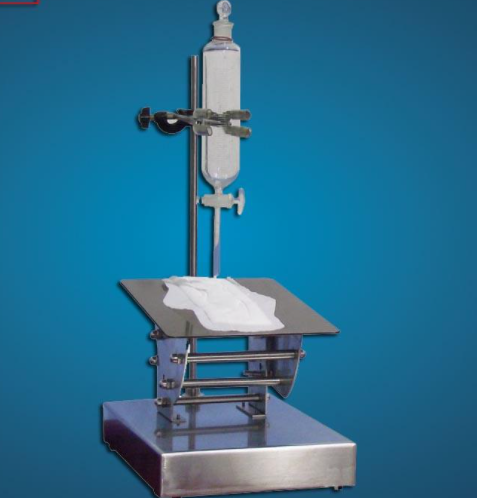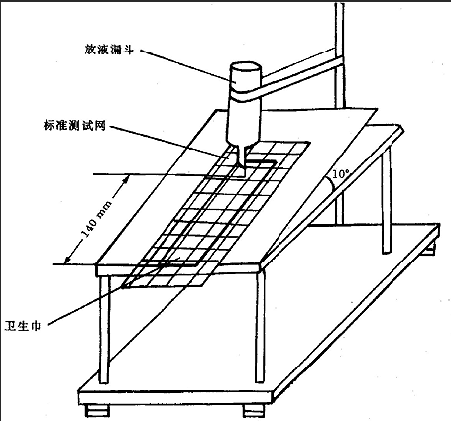One-piece sanitary napkin is one of the disposable sanitary products monitored by the state. Its detection indicators are very strict, and new detection methods are constantly adopted to achieve higher quality assurance.

In the current sanitary napkin standard, the "penetration amount" replaces the "penetration time" of the original standard, the test method is changed from the original plane method to the inclined plane method, and the test solution adopts the standard "synthetic test solution", which replaces the pig blood used in the past. These changes make the measurement method of "penetration performance" (including "penetration amount" and "front transverse diffusion width") of sanitary napkins more similar to the actual use state of sanitary napkins than the original method. When using pig blood to test the permeability, there are some problems, such as it is difficult to collect pig blood, it is difficult to keep the collected pig blood, and there are certain differences in the viscosity of different batches of pig blood, which sometimes directly affect the correctness of the permeability test results. The standard synthetic test solution is prepared by adding 1% (volume ratio) of standard medium into the basic solution composed of NaCl, NACO, glycerol and CMC Na. The standard synthetic test solution is not only similar to pig blood in viscosity, oiliness and salt content, but also makes the surface tension of the synthetic test solution close to pig blood by adding standard medium, so as to make the test results more reasonable and accurate. The amount of infiltration is directly affected by the material properties of the outer coating and inner absorption layer of the one-piece sanitary napkin. Some products of better brands are coated with dry net bread, and the inner absorption layer is made of fluff pulp with high molecular absorbent. During the test, the synthetic test solution can be quickly absorbed by the net surface and then enter the inner absorption layer, and the infiltration amount can be guaranteed. According to the current standard, the penetration amount shall not be less than 3.9, 2.9 and 1.9g respectively according to the superior product, first-class product and qualified product.

The index of the front lateral diffusion width of the one-piece sanitary napkin is related to whether the sanitary napkin can prevent side leakage during use. On the basis of specifying the width of sanitary napkins as 6O, 70 and 80mm, the original standard requires that the front transverse diffusion width of Grade A products shall not be greater than 50mm, while there are no requirements for Grade B and C products. Since the current standard has no rigid provisions on the width of sanitary napkins, therefore, The index of the front transverse diffusion width of superior products is set as "no full width, while no requirements are made for first-class products and qualified products. In the actual test since this year, the front transverse diffusion width of all samples marked with superior products is less than the full width, which meets the specified requirements.

Of course, even if the above two indicators meet the requirements of one-piece sanitary napkin products, side leakage may occur due to the change of human posture during use. In this regard, sanitary napkin manufacturers have taken technical measures in their products, such as wing protection structure, setting side leakage prevention concave channel, and three-dimensional leakage prevention enclosure, so as to further improve the service performance of sanitary napkins.
Comment(0)
You can comment after
SIGN IN